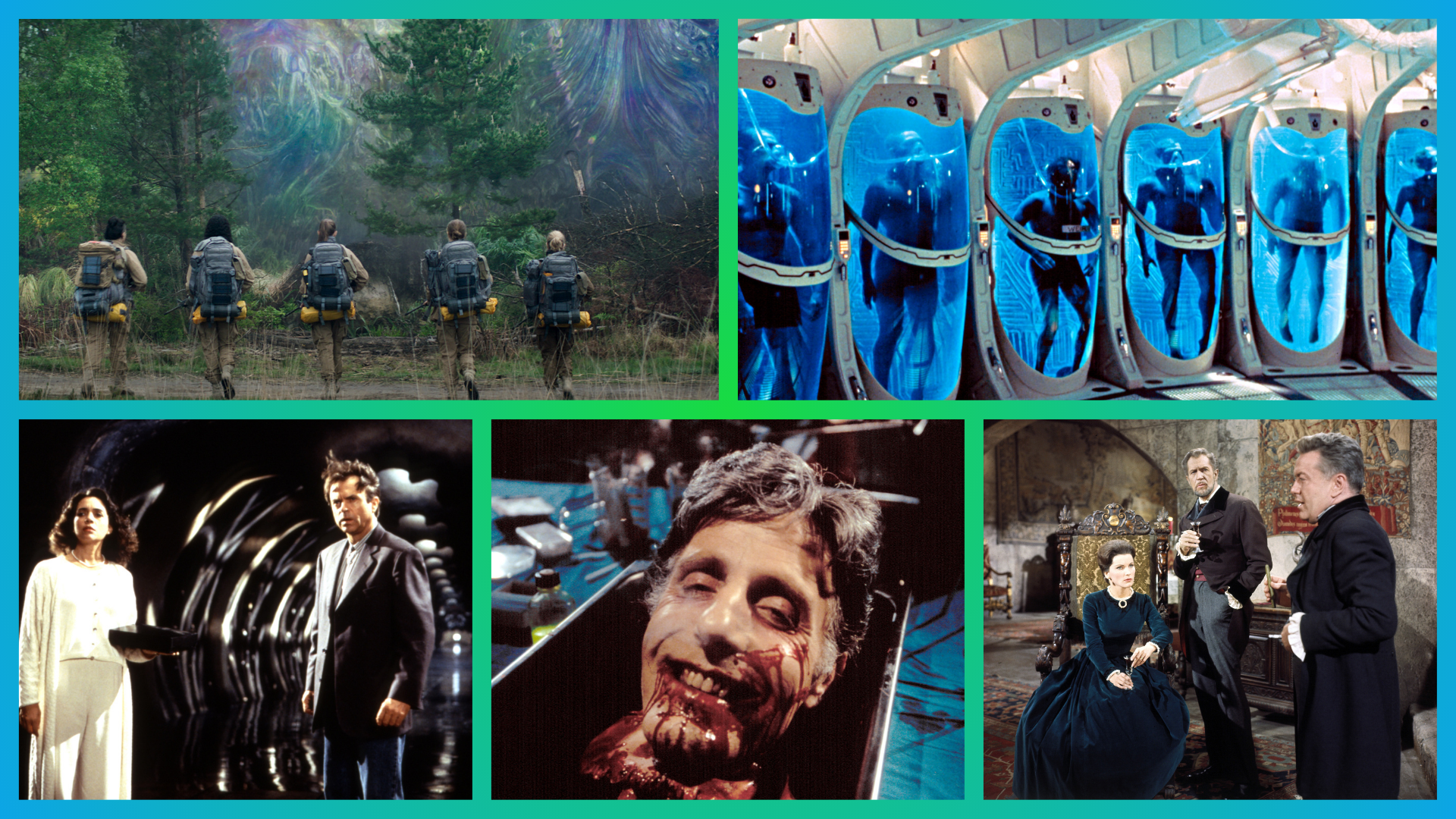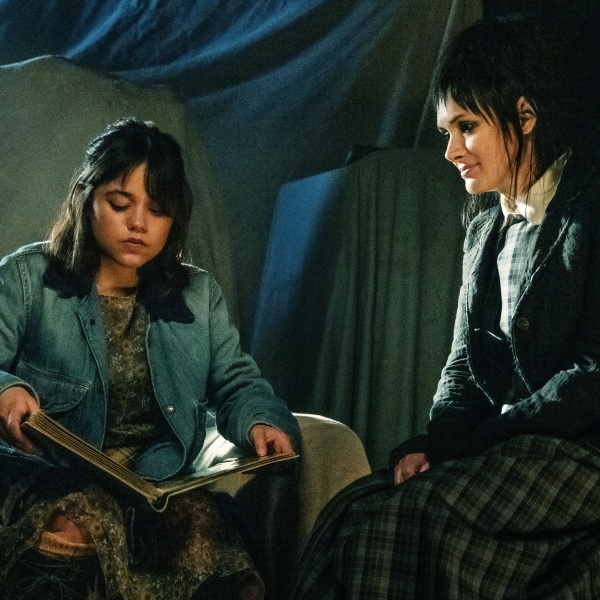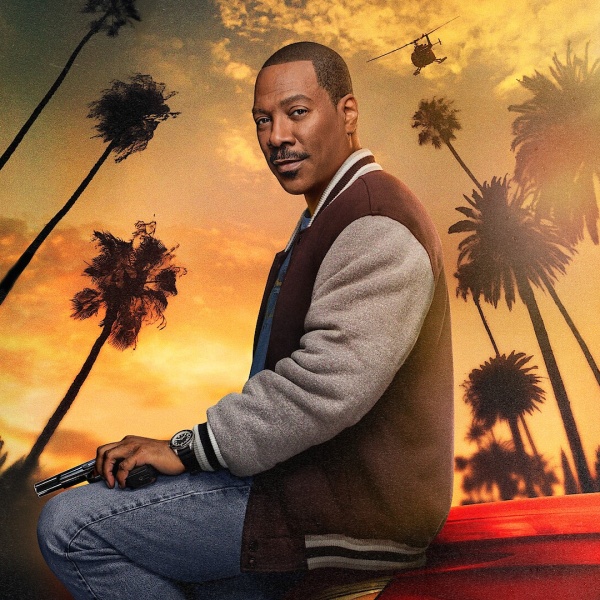Any conversation about Lovecraftian horror isn’t complete without addressing the man the genre itself is named after, and that’s a tough talk to have — putting it mildly. While all genres of horror have their fair share of baggage (slashers can often be sexist and racist, for example), nothing really compares to the baggage of H.P. Lovecraft’s personal beliefs.
Born in 1890, Lovecraft wrote 65 novels, short stories, and novellas before his premature death in 1937 due to cancer, and his writings eventually birthed an entire subgenre. The name Lovecraft is synonymous with a type of cosmically tinged horror that emphasizes the terror of the unknown, beings incomprehensible to the human mind, and the thin divide between sanity and insanity. These are potent themes that quickly spread beyond Lovecraft and his influential Cthulhu mythos and into other writers’ and storytellers’ works.
But this fear of the unknown that is so pivotal to Lovecraft and his work is easily traced back to the author’s intense xenophobia, racism, and anti-Semitism, all of which are heavily documented in his personal journals and writings. Many of his earliest fiction work was also explicitly racist, with several short stories focusing on “racial impurity” as a “horror” to avoid, although his later work largely lacked this explicit prejudice. HBO’s “Lovecraft Country” smartly presented a combination of cosmic horror and the ugliness of the Jim Crow South as an explicit rejection of Lovecraft’s worldview.
The ugliness of Lovecraft’s personal beliefs makes it understandable why many would write off reading his works or watching anything that cites him as an inspiration. But the thing is, Lovecraft’s influence is as far reaching as Cthulhu’s tentacles. The list of horror directors who take at least some cues from the author and his exploration into the terrors of the unknown ranges from John Carpenter to Guillermo del Toro, and includes many of the greatest horror directors of all time. Many of the greatest horror classics owe some debt to Lovecraft, even when it’s not entirely obvious; “The Thing” and “The Evil Dead,” for example, were inspired by Carpenter and Sam Raimi’s respective research into the author’s canon.
It’s impossible to fully separate the genre Lovecraft spawned from the man himself, and all films that were directly adapted from his work certainly bear a heavy asterisk. But Lovecraft’s work continues to endure for a reason. His stories dig into deeper fears than your average haunting or monster sighting, exposing existential fears about humanity’s place in the world that prove more bone-chilling than many other scary subsets. There’s a reason why the films inspired by or directly adapted from Lovecraft’s work are often so acclaimed; if you come to horror to be scared, look no further than a Lovecraft movie.
With Halloween approaching, IndieWire decided to round-up the single scariest subgenre in the horror canon, and present the cosmic horror films that most terrify us. The films selected range from actual Lovecraft adaptations, like “The Haunted Palace,” to films that were obviously inspired by Lovecraft’s work, like “Event Horizon,” to films that were not so obviously inspired by Lovecraft’s work, such as “The Thing” or “The Evil Dead.” The following entries all share a common delirious effect, mixing tangible horror with a psychological terror that is consistently unsettling to watch.
Entries are listed in chronological order. Read on for the top 10 greatest Lovecraftian horror films of all time.
-
“The Haunted Palace” (dir. Roger Corman, 1963)

Image Credit: Courtesy Everett Collection One of the first Lovecraft adaptations in film history, “The Haunted Palace” is among the most acclaimed works from B-movie icon Roger Corman. Named after the classic poem from Edgar Allan Poe, the movie is inspired by Lovecraft’s novella “The Case of Charles Dexter Ward,” with lines from the poem used as a framing device; a fitting combination, given how much Lovecraft owed to Poe as an inspiration. Vincent Price stars as Dexter Ward, who inherits a manor overlooking the town of Arkham, Massachussets. Arriving with his wife Anne (Debra Paget), he discovers the town is filled with hideously deformed citizens and that his ancestor, Joseph Curwen (also played by Price), dabbled in black magic and summoning the Elder Gods. Price is unsurprisingly terrific, and the film’s opulent sets and costume design make it the rare Corman film with the budget to match the director’s great ambition.
-
“The Dunwich Horror” (dir. Daniel Haller, 1970)

Image Credit: Courtesy Everett Collection One of the earliest Lovecraft adaptations, “The Dunwich Horror” comes from director Daniel Haller, who worked as the art director for “The Haunted Palace” and on many of Corman’s other films. Based on Lovecraft’s 1928 short story, the 1970 film stars Sandra Dee as graduate student Nancy, who comes into possession of the Necronomicon and is soon pursued by the mysterious Wilbur (Dean Stockwell) who plans to use the book to summon evil deities. A bit dated and cheesy, “The Dunwich Horror” doesn’t fully hold up to modern viewing, but Stockwell and Dee are solid, and the film was an important step forward towards the Lovecraft adaptations that followed.
-
“The Evil Dead” (dir. Sam Raimi, 1981)

Image Credit: ©New Line Cinema/Courtesy Everett Collection Sam Raimi wrote the script to the original “Evil Dead” under the title “Book of the Dead,” after the fictional magic textbook that’s popped up in dozens of Lovecraft’s short stories. The Book of the Dead, renamed from the Necronomicon to the Naturom Demonto, made it into the final film as the artifact that causes Deadites and demons to attack Ash Williams (Bruce Campbell) and his friends during their doomed stay at a Tennessee cabin. The resulting low-budget cult film mixes Lovecraft’s fear of the unknown with a more straightforward zombie film, as Ash is forced to fight off his own friends when they are possessed by spirits beyond his understanding. While Raimi’s sequel “Evil Dead II” is generally superior to the original, its comedic bent distances itself considerably from the cosmic horror tradition; latter entries either abandonded horror entirely (“Army of Darkness”) or refashion the franchise in a considerably more generic fashion (both of the quasi-reboots). The original — with its overt nasty streak and truly frightening demons from another world — is the only one that’s genuinely terrifying.
-
“The Thing” (dir. John Carpenter, 1982)

Image Credit: Universal/courtesy Everett Collection “The Thing” is actually based on “Who Goes There,” a novella from Lovecraft contemporary John W. Campbell. But Carptenter’s appreciation for Lovecraft is well known, and the filmmaker named the author’s work as an inspiration for the second adaptation of the novella, after 1951’s “The Thing From Another World.” Focusing on a group of American researchers on a remote trip to Antarctica, “The Thing” pits its characters against a mysterious and unknowable alien that can assimilate and imitate other beings. As rendered by the film’s iconic special effects, The Thing is an unknowable, indefinable horror and its presence causes the group to descend into insanity, infighting, and paranoia as they lose all trust in each other. Cosmic horror is more than just Cthulhu; it’s a bone-deep exisistential fear of the unknown, which “The Thing” provides in abundance.
-
“In the Mouth of Madness” (dir. John Carpenter, 1994)

Image Credit: ©New Line Cinema/Courtesy Everett Collection “In the Mouth of Madness” isn’t directly adapted from a Lovecraft work, but its title is a clear riff on the author’s famous “At the Mountains of Madness.” It’s the most obvious Lovecraft pastiche in Carpenter’s entire career and the third in what Carpenter calls his “Apocalypse Trilogy” (after “The Thing” and “Prince of Darkness”). The film stars Sam Neill as an insurance agent who travels to a small town to look into the missing persons case of a successful horror novelist. The line between what’s fiction and what’s reality begins to blur quickly and Neill is terrific as a man descending into madness. The film consistently goes to weird and unexpected places, with a swerve into outright meta territory in the final act that could be silly, but manages to genuinely frighten. What’s more, Carpenter loads the film with unforgettable and gorgeous imagery — displaying exactly what makes him such a horror master.
-
“Re-Animator” (dir. Stuart Gordon, 1985)

Image Credit: Courtesy Everett Collection One of the least terrifying films on this list is one based directly on a Lovecraft work. A very, very loose adaptation of the author’s novelette “Herbert West–Reanimator,” “Re-Animator” follows the story of a medical student (Jeffrey Combs) who invents a reagent to bring dead bodies back to life and plays it for almost pure comedy, with a darkly humorous streak that has far more in common with “Shaun of the Dead” or “Evil Dead II” than Lovecraft’s signature brand of horror. Purists might balk if the results weren’t so delightful, with unforgettable gore, hilarious dialogue, and a surprising streak of sweetness in its romance between secondary leads Dan (Bruce Abbott) and Meg (Barbara Crampton). Is it truly Lovecraftian horror? Maybe not. But it’s probably the best horror film based on Lovecraft — and that counts for something.
-
“Event Horizon” (dir. Paul W. S. Anderson, 1997)

Image Credit: ©Paramount/Courtesy Everett Collection “Event Horizon” bombed at the box office in 1997, but DVD sales helped keep it alive as a sneakily influential horror classic that helped influence projects like the “Dead Space” video game series. Set in 2047, the movie focuses on a crew of astronauts sent on a rescue mission to Planet Neptune. What starts as a pretty standard “Alien” riff goes full Lovecraft quickly when the alien force that descends upon the ship proves less a literal alien than an evil presence intent on driving the crew to their ruin. The performances are great with Laurence Fishburne and Sam Neill as particular standouts, and the visual effects create suitably nightmarish imagery. It’s the best film of director Paul W. S. Anderson’s career; a low bar, considering the “Resident Evil” franchise’s general quality. Still, the film remains a great watch in its own right.
-
“Annihilation” (dir. Alex Garland, 2018)

Image Credit: ©Paramount/Courtesy Everett Collection / Everett Collection Although it bombed in theaters, “Annihilation” is arguably director Alex Garland’s best work: an ambitious, thrilling story of psychological destruction. Based on the novel by Jeff VanderMeer, the film stars Natalie Portman as Lena, a scientist leading an expedition into a mysterious quarantined zone known as “The Shimmer” that has emerged in the wilderness of Florida. Isolated in the unknown terrain, an all-female team quickly discovers that the zone has the power to alter people’s bodies, and they soon descend into in-fighting and paranoia. There’s plenty of gnarly thrills, but it’s the movie’s depiction of how the women plunge into that truly terrifies.
-
“The Lighthouse” (dir. Robert Eggers, 2019)

Image Credit: Everett Collection “The Lighthouse” is a very literary-indepted film; Herman Melville and Robert Louis Stevenson were also influences that director Robert Eggers named for his 2019 nightmarish buddy horror movie. But Lovecraft is one of the more obvious influences, as the movie is filled with surreal imagery and sea creatures with tentacles that drive Robert Pattinson’s lead to madness. What makes the film most interesting is how this exists alongside its core relationship between Pattinson and Willem Dafoe’s lighthouse keepers, whose tumultuous relationship often feels like it’s driving the two to craziness more than any supernatural element lurking in the background. It’s one of the few Lovecraft-inspired works where the humans you know are just as mysterious and scary as the otherworldy beings you don’t.
-
“Color Out of Space” (dir. Richard Stanley, 2019)

Image Credit: Courtesy Everett Collection “Color Out of Space” is remarkable as a triumphant return for a filmmaker whose directing career seemed to end before it ever began. The movie is the fourth directorial effort of Richard Stanley — and his first after he was notoriously fired during the troubled production of 1996’s “The Island of Dr. Moreau.” Stanley continued to direct short films and wrote screenplays for some features, but “Color Out of Space” was the first time he came back to the director’s chair for a feature since the “Dr. Moreau” disaster. Over 20 years later, he proved he hadn’t lost a step.
Adapted from Lovecraft’s short story of the same name, “Color Out of Space” focuses on farmer Nathan Gardner (Nicolas Cage), who moves his family to his late father’s farm right before a bizarre meteorite lands on the property. What initially seems like just a pretty rock turns into a nightmare for the family when bizarre visions drive them to mad and a multicolor energy begins to alter them physically. The cast is committed to the extreme weirdness of the film, and Stanley proves an expert in handling the wild special effects (the titular color is both gorgeous and horrifying) as well as in escalating the story from slow boil to full-on nightmare. The film is the proposed first in a trilogy of Lovecraft adaptations Stanley hopes to make, and its excellence makes the next two enticing propositions.








